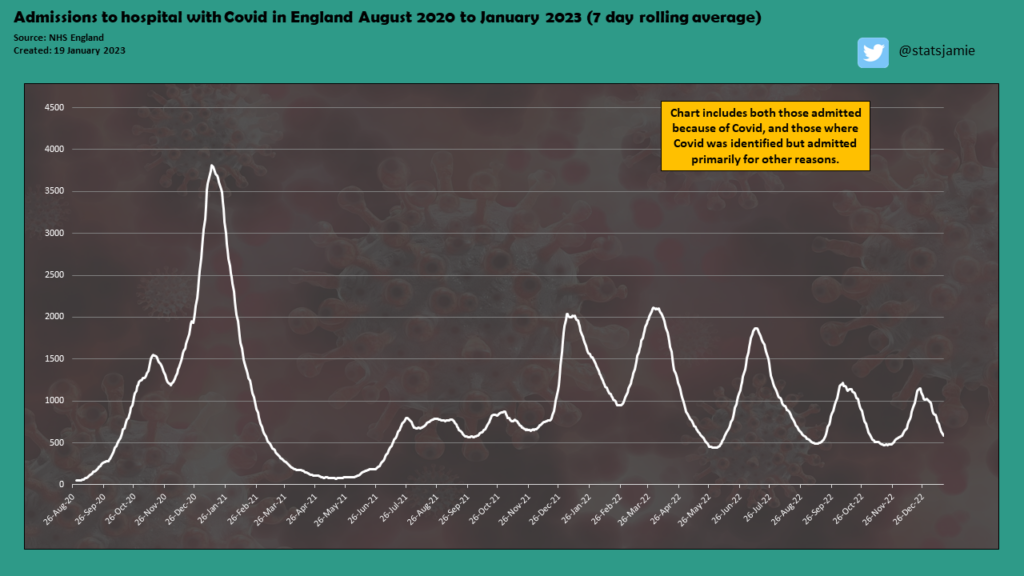As we moved into the New Year with the usual winter NHS pressures, there were media reports the UK Government was considering last-resort plans to advise Britons to wear masks on public transport, work from home and bring back social distancing. At face value, the headlines looked like scaremongering as I could see nothing official, but many of the usual commentators called for the return of measures. Predictably, all of this came while the winter.Covid wave falls back naturally without new interventions
How do we know if Covid infections are rising or falling?
With fewer mass Covid-19 testing centres, the numbers of daily tests are a fraction of the height of the pandemic, but the Office for National Statistics estimates if infections are rising or falling by randomly testing people across the country. An alternative and more timely measure is through monitoring hospital admissions. While testing in hospitals is not as widespread as at the height of the pandemic, it still occurs.
Since Omicron took over as the predominant variant of Covid, most (60-65%) patients in hospital with Covid have another reason as the main reason for admission. But admission trends are a powerful indicator of how prevalent the virus is.
Infections tend to rise for 4-6 weeks and then fall back naturally
Since Boris Johnson announced back in February 2022 that England would axe Covid restrictions, we have seen some mini waves of the virus, but these have fallen back naturally with no interventions from the Government. The UK is not the only country where this has happened and when the usual suspects were raising alarm bells in the summer, I issued a video explaining it would die down soon if following the trend of other countries. Guess what – exactly what I predicted happened.
There was another mini-wave in the Autumn that fell back naturally and as we went into the winter wave, this was the first test to see if a greater likelihood of indoor mixing would break the trend of the previous two waves. But no, we again saw infections rise for around a month before falling back again, with no new interventions from the Government.

Conclusion
Covid-19 is a virus here to stay and just as with the Spanish Flu pandemic that hit around a hundred years ago, the further from the start of the pandemic, the more immunity that exists within the population. What the data has shown since February 2022 is that there will be waves of the virus. They will come, peak and we will see each Covid wave fall back naturally without new interventions.
If people choose to wear masks or distance themselves from others, that is their choice. But those same individuals should respect the choice of others who want to live differently. One thing we have to accept is another respiratory virus that lives among us, and for some, they will fall ill and require hospital treatment.
One interesting statistic though is if you add up all the patients in English hospitals this winter because they were predominantly in a bed because of Covid, or had the flu, it was much lower than the number of patients in a bed who were fit to leave but for various reasons, such as a lack of a care package in the community they could not. The NHS needs to address bed capacity and accept a certain number will require hospitalisation each winter for viruses, rather than talk of new interventions for the public. The Government also needs a coherent health and social care policy, so the NHS is not a hotel service for patients ready to leave but blocking a bed for the next patient.
Follow me over on Twitter, Gettr, Instagram, or Facebook for my daily updates. Or read my recent blog discussing the USA extending the vaccine requirement for foreign nationals to enter.

